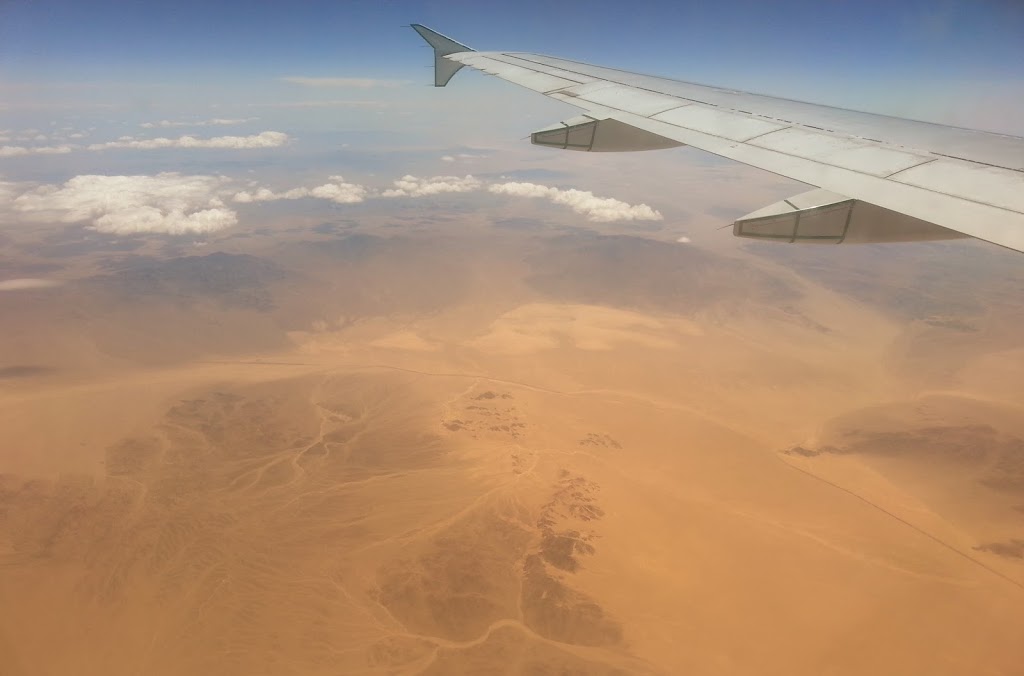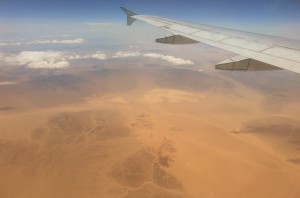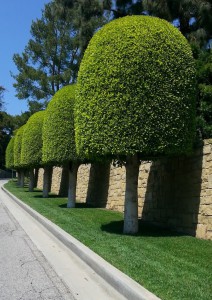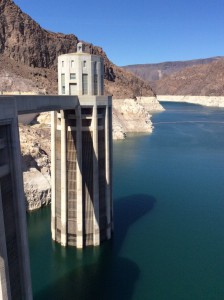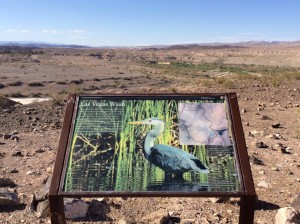He told us that his area has plans to recycle wastewater into a kind of grey water that could be used by the households, as a measure of relief for the overstressed water supply to his neighbourhood. It sounded like an ambitious plan, but even he questioned how many neighbours would stay if they have to use their own sewage…. “I’m not sure how many of my neighbours would agree to drink their pee,” he told us.
Arriving at the Lake Mead Park, we started our investigation at the visitors centre. The lady behind the desk showed us on a map of what remained of Lake Mead. She told us that only 36 percent of the water still remained in the reservoir, because of the drought. More worryingly, she told us that Lake Mead would never be full again. The demand for water is simply more than the supply. When the water inlets that lead to pipes dry up, they simply dig a new inlet to buy a bit of time. It’s a critical situation that we certainly didn’t expect.
We followed a road that promised to lead us to the lake, away from the dam and into the valley. At one point the gravel trail changed into smooth concrete and then back again. We continued to drive for another kilometre to arrive at shore of Lake Mead. Only then did we really appreciate how much lower the current water level is from that grey line that indicated the old “normal” surface level: From where we stood, a car parked above us by the rocks close to that line had the dimensions of a housefly. We realized the concrete patch in the road, way above, was once a boat launch. Now we could also explain the ladders high up against the rocks: they were ladders that people used to climb out of the water. It was like looking at the old Lake Mead from the fish’s eye view.
Continuing our tour, we found a sign – in the middle of the desert — that explained the Vegas Wash –Wetlands-. A decade ago the wetlands would have started just by the sign, but of course, we couldn’t find water at all.
The real shock came when we left the park and after just a few kilometres and some curves, we saw a huge green golf course, kept lush by sprinklers. Bizarrely, there were no golfers to be found – the desert heat was too much for them. We actually stopped the car to take in this strange scene – certainly it ranks among the weirdest things I had ever seen.
On our way back to LA I talked with a teacher who lives in Las Vegas and asked her about the water situation. She told me that she was concerned about the quality of the drinking water because she believed that pollutants sink to the bottom of the lake and she was afraid that soon the government would not be able to guarantee the quality of the water anymore. It was a worry that she came up with herself, but it helped her make the decision to leave and sell her house before others come up with the same idea and her property was worthless.


